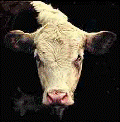Animal Science, Department of
Date of this Version
8-2016
Document Type
Article
Citation
Sieren, S.E. 2016. Evaluation of hematological and serum biochemical profiles associated with the supplementation of zilpaterol hydrochloride to feedlot heifers [thesis]. University of Nebraska-Lincoln.
Abstract
Supplementation of zilpaterol hydrochloride (ZH; Zilmax®) to cattle has been suggested to have a negative impact on well-being of cattle. The objective of this study was to evaluate the hematological and serum biochemical profiles in feedlot heifers supplemented with ZH in a minimal stress environment. Heifers were randomly assigned to one of two treatment groups: Control (CON no ZH), or ZH (supplemented with ZH at 8.33mg/kg of feed on a DM basis). The study was conducted over a period of 25 d (-2 to 23), with three serum collection periods [-2 to 4 d (ZH supplementation began on d 0); 13-16 d; and 21 to 23 d (withdrawal period)]. Serum samples were collected for a large animal chemistry profile analysis and blood samples were collected for hematological profile analysis. Liver, longissimus dorsi (LM), and biceps femoris (BF) samples were collected for vitamin E concentration analysis. There was a treatment effect for serum calcium (P = 0.008) with concentrations being greater in CON. A treatment effect was observed for serum bicarbonate (P = 0.03), with ZH having greater concentrations. A treatment x time interaction was observed for glucose (P = 0.02), BUN (P < 0.001), Cl (P = 0.04), creatinine (P ≤ 0.001), and creatine kinase (P≤ 0.001). In heifers fed ZH, creatinine, creatine kinase, and Cl concentrations in the serum were greater than CON heifers whereas glucose and BUN concentrations were decreased in the ZH heifers. There was a treatment x time interaction for alkaline phosphatase (ALP, P < 0.001) and gamma-glutamyltransferase (GGT, P = 0.004). Overall, concentrations of ALP and GGT were greater in CON heifers. In the hematological profile, there was a treatment effect (P = 0.02) for hematocrit, where the ZH heifers had greater hematocrit. These data suggest that in this controlled environment, there were no negative impacts observed on the homeostasis with supplementation of ZH and most variables were within the normal homeostatic range of feedlot cattle.
Advisor: Steven J. Jones



Comments
A THESIS Presented to the Faculty of The Graduate College at the University of Nebraska In Partial Fulfillment of Requirements For the Degree of Master of Science, Major: Animal Science, Under the Supervision of Steven J. Jones. Lincoln, Nebraska: August, 2016
Copyright (c) 2016 Sara Elizabeth Sieren